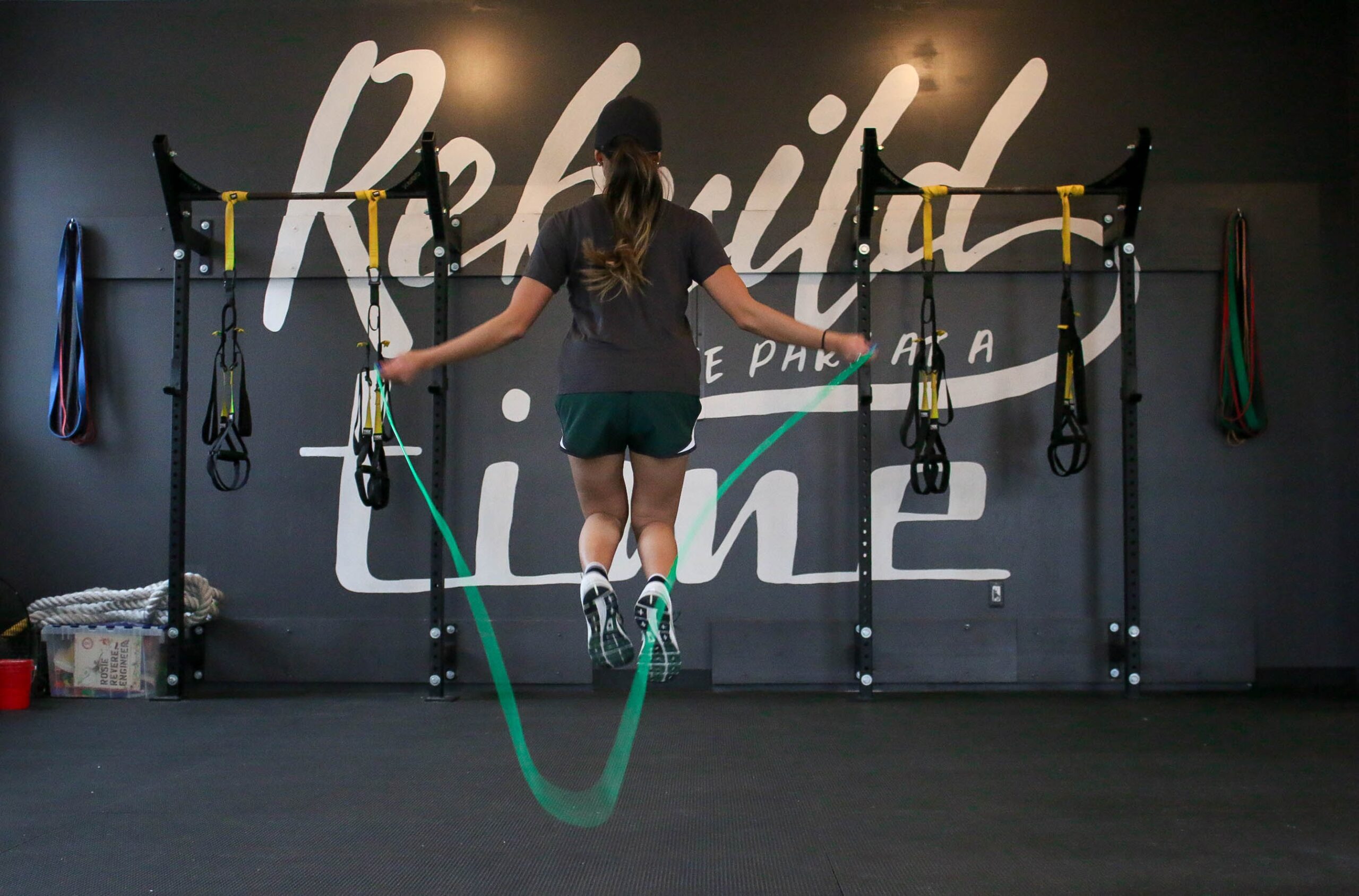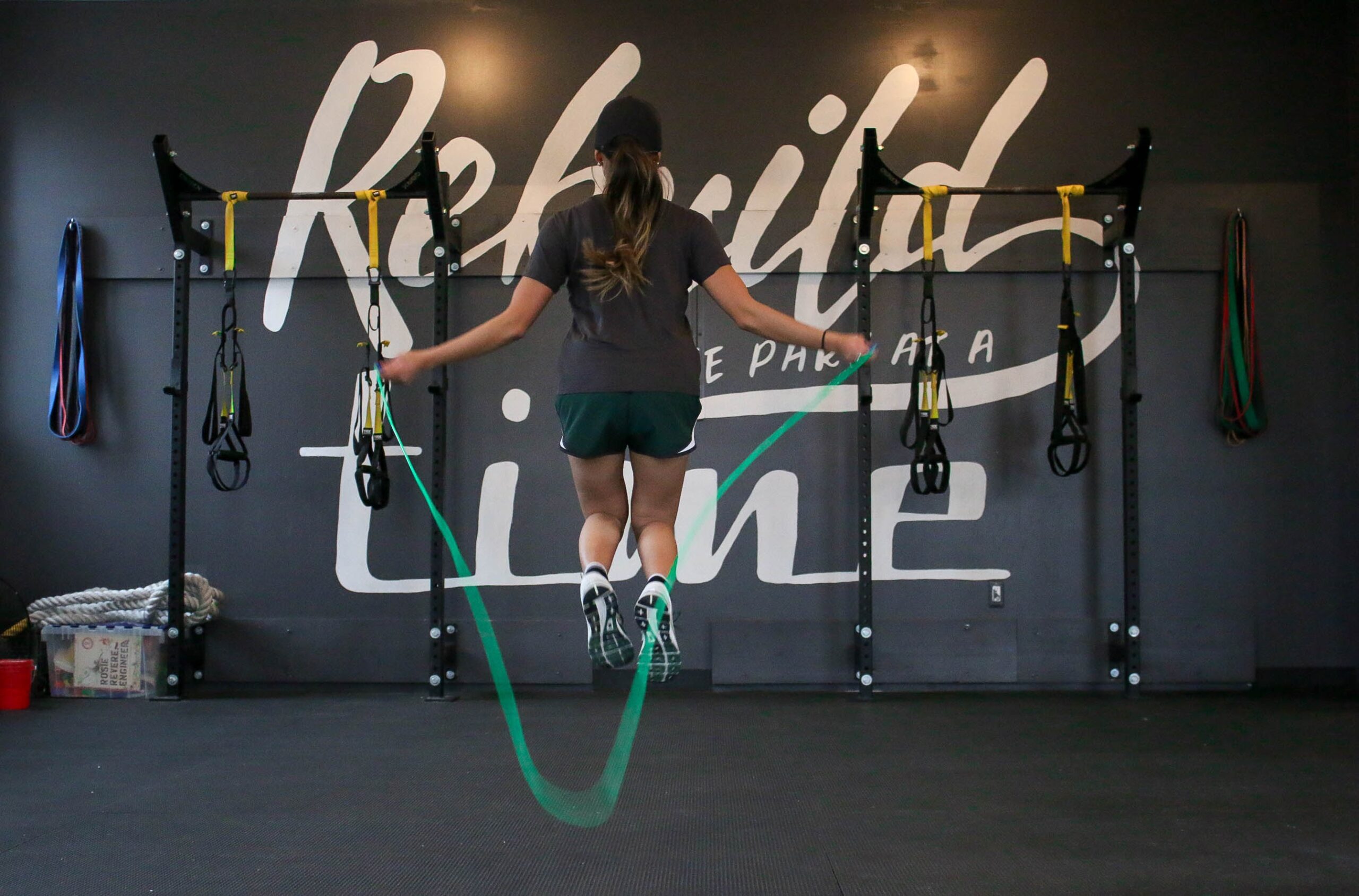Have you ever struggled to stick to a regular fitness routine? It can be challenging to stay motivated and consistent, especially in the face of busy schedules and competing priorities. However, maintaining a regular fitness routine is essential for your overall health and well-being. In this article, we will explore some practical tips and strategies to help you stay on track and make fitness a regular part of your life. Whether you’re just starting out or trying to get back on track, these tips will help you stay committed and motivated to achieve your fitness goals.

This image is property of images.unsplash.com.
Understanding the Importance of Regular Fitness
Regular fitness is crucial for maintaining overall health and well-being. Engaging in regular exercise offers numerous benefits, both physically and mentally. By incorporating exercise into your daily routine, you can improve your physical fitness, boost your mental health, and enhance your longevity and quality of life.
Benefit of Regular Exercise on Physical Health
Regular exercise has a profound impact on your physical health. It helps strengthen your cardiovascular system, increases lung capacity, and improves blood circulation. Engaging in activities such as running, swimming, or cycling can enhance your endurance and stamina. Furthermore, regular exercise plays a vital role in weight management, as it helps burn calories and build lean muscle mass. By maintaining a healthy weight, you can reduce the risk of developing various chronic diseases like heart disease, diabetes, and certain types of cancer.
Benefits on Mental Health
Exercise not only benefits your physical health but also has a positive impact on your mental well-being. Engaging in regular physical activity helps reduce stress, anxiety, and symptoms of depression. When you exercise, your body releases endorphins, which are known as “feel-good” hormones. These endorphins can boost your mood, increase your energy levels, and promote a sense of overall well-being. Additionally, exercise can improve cognitive function, enhance memory, and increase focus and productivity.
The Impact on Longevity and Quality of Life
Regular fitness plays a significant role in increasing longevity and improving the quality of life. Engaging in physical activity can help prevent age-related decline in muscle mass, bone density, and overall strength. It can also reduce the risk of developing chronic conditions such as osteoporosis and arthritis. By maintaining an active lifestyle, you can improve your mobility, flexibility, and balance, thus reducing the risk of falls and injuries. Regular exercise also promotes healthy aging by boosting cognitive function and reducing the risk of cognitive decline and dementia.
Setting Realistic Fitness Goals
Setting realistic fitness goals is essential for ensuring long-term success and motivation. By identifying personal fitness objectives and creating both short-term and long-term goals, you can track your progress and make necessary adaptations along the way.
Identifying Personal Fitness Objectives
Before setting fitness goals, it is essential to identify your personal fitness objectives. These objectives may vary from improving cardiovascular health and losing weight to building strength and muscle tone. By understanding what you want to achieve, you can create specific and targeted goals that align with your desires.
Creating Short-Term and Long-Term Goals
Once you have identified your fitness objectives, it is crucial to create both short-term and long-term goals. Short-term goals provide immediate targets that are attainable within a shorter period, such as a few weeks or months. Long-term goals, on the other hand, are more overarching and require sustained effort over an extended period, typically several months or even years. By having a combination of short-term and long-term goals, you can stay motivated and have a clear direction towards achieving your desired fitness level.
Adapting Goals as You Progress
As you make progress in your fitness journey, it is essential to adapt your goals accordingly. Regularly assess your progress and adjust your goals to challenge yourself and keep your routine interesting. As you reach milestones and achieve your objectives, set new targets to continue pushing yourself and maintaining your progress.
Creating a Balanced Workout Plan
A well-rounded workout plan includes various types of exercises that target different aspects of fitness. By incorporating cardiovascular exercises, strength training, and flexibility and balance training, you can create a balanced routine that promotes overall health and fitness.
Incorporating Cardiovascular Exercises
Cardiovascular exercises are essential for maintaining a healthy heart and improving endurance. Activities such as jogging, cycling, swimming, or dancing can get your heart rate up and promote cardiovascular fitness. Aim for at least 150 minutes of moderate-intensity cardio exercise or 75 minutes of vigorous-intensity exercise per week.
Including Strength Training
Strength training is crucial for building lean muscle mass, increasing bone density, and improving overall strength. Incorporate exercises that target all major muscle groups, such as squats, lunges, push-ups, and dumbbell curls. Aim for two to three strength training sessions per week, giving ample rest days in between to allow for muscle recovery and growth.
The Role of Flexibility and Balance Training
Incorporating flexibility and balance training into your workout plan is essential for maintaining mobility, preventing injuries, and promoting overall stability. Stretching exercises like yoga or Pilates can improve flexibility, while exercises such as single-leg balances or stability ball workouts can enhance balance. Aim to include flexibility and balance exercises at least two to three times a week.
Scheduling Consistent Workout Times
Consistency is key when it comes to maintaining a regular fitness routine. By determining the best time to exercise, creating a regular exercise routine, and planning for rest days, you can establish a sustainable and realistic schedule.
Determining the Best Time to Exercise
Finding the best time to exercise is different for everyone. Some individuals prefer early morning workouts to kickstart their day, while others find it more convenient to exercise in the evening. Consider your personal schedule, energy levels, and preferences to determine the ideal time for you. Experiment with different workout times to find what works best for your body and lifestyle.
Creating a Regular Exercise Routine
Once you have determined the best time to exercise, establish a regular exercise routine. Consistency is key, so aim to exercise on the same days and times each week. By creating a routine, you are more likely to stick to your fitness goals and make exercise a habit.
Planning for Rest Days
Rest days are just as important as workout days. They allow your body to recover and repair, reducing the risk of overtraining and injury. Incorporate rest days into your schedule and use them as an opportunity to rest, relax, and recharge. On rest days, engage in gentle activities such as stretching, yoga, or walking to promote active recovery.

This image is property of images.unsplash.com.
Staying Motivated and Committed
Staying motivated and committed to your fitness routine can be challenging at times. However, by finding exercise activities you enjoy, tracking your progress, and celebrating your achievements, you can maintain your motivation and dedication.
Finding Exercise Activities You Enjoy
Engaging in activities that you genuinely enjoy is key to staying motivated and committed. Whether it’s dancing, hiking, playing a sport, or attending group exercise classes, find activities that bring you joy and make exercise fun. By incorporating enjoyable activities into your routine, you are more likely to stick with it in the long run.
Tracking Your Progress
Tracking your progress is crucial for maintaining motivation and seeing the results of your hard work. Keep a fitness journal, use fitness apps or trackers, or take regular measurements to monitor your progress. Celebrate small victories along the way, such as running a longer distance or lifting heavier weights. Seeing progress will motivate you to keep going and continue working towards your goals.
Celebrating Your Achievements
Take the time to celebrate your fitness achievements, no matter how big or small. Reward yourself for reaching milestones and achieving your goals. Treat yourself to a massage, buy new workout clothes, or indulge in a healthy and delicious meal. Celebrating your achievements not only boosts your motivation but also reinforces positive behavior and helps maintain a positive mindset.
Building Resilience to Overcome Obstacles
Building resilience is essential for overcoming obstacles that may arise during your fitness journey. By identifying potential challenges, creating a contingency plan, and revisiting and adjusting your goals, you can overcome setbacks and stay on track.
Identifying Potential Challenges
Anticipate potential challenges that may hinder your progress and become barriers to maintaining a regular fitness routine. These challenges can vary from time constraints and lack of motivation to injuries or work-related stress. By recognizing potential obstacles, you can proactively develop strategies to overcome them.
Creating a Contingency Plan
Having a contingency plan in place can help you overcome unexpected challenges and setbacks. If your scheduled workout time is interrupted, have alternative exercise options in mind, such as a shorter workout or a different activity. Additionally, explore other workout locations or exercise modalities that can be easily adapted to accommodate unforeseen circumstances.
Revisiting and Adjusting Your Goals
As you encounter obstacles or setbacks, consider revisiting and adjusting your goals when necessary. Sometimes, life circumstances change, and certain goals may no longer be realistic or align with your current priorities. Be flexible and open to modifying your goals as needed to ensure they remain achievable and relevant to your fitness journey.

This image is property of images.unsplash.com.
Maintaining a Healthy Diet
Maintaining a healthy diet is paramount in supporting your fitness goals. Proper nutrition provides your body with the fuel and nutrients it needs to perform optimally during exercise and recover effectively afterward.
Understanding the Importance of Nutrition in Fitness
Nutrition plays a vital role in overall health and fitness. Consuming a balanced diet that includes a variety of whole foods such as fruits, vegetables, lean proteins, whole grains, and healthy fats can optimize your performance, aid in recovery, and support muscle growth. Ensure you are consuming adequate calories to fuel your workouts and meet your energy needs.
Planning Healthy Meals
To maintain a healthy diet, it is essential to plan your meals in advance. Preparing meals at home allows you to have control over the ingredients and portion sizes. Aim for a well-balanced plate that includes protein, carbohydrates, and healthy fats. Additionally, consider meal prepping to save time and ensure you have nutritious options readily available throughout the week.
Proper Hydration in Fitness Routine
Proper hydration is crucial for optimal performance and recovery. Drink water before, during, and after your workouts to replace fluids lost through sweat. Aim to drink at least eight glasses of water per day, or more if you are exercising intensely or in hot weather. Hydration helps regulate body temperature, lubricate joints, and transport nutrients to muscles.
Getting Adequate Rest and Recovery
Rest and recovery are essential components of any successful fitness routine. By understanding the importance of sleep in fitness, recognizing the concept of overtraining, and integrating active recovery days, you can optimize your progress and prevent burnout.
The Importance of Sleep in Fitness
Sleep is critical for overall health and well-being, and it plays a significant role in fitness. During sleep, your body repairs and regenerates tissues, balances hormone levels, and consolidates learning and memory. Aim for seven to nine hours of quality sleep per night to enhance recovery and support optimal performance.
Understanding the Concept of Overtraining
Overtraining occurs when you push your body beyond its capacity to recover. It can lead to physical and mental fatigue, decreased performance, increased risk of injury, and a decline in overall health. Listen to your body’s signals and give yourself rest days as needed. Avoid excessive training volume and intensity, and prioritize recovery to prevent overtraining.
Integrating Active Recovery Days
Active recovery days are light exercise sessions that aim to promote muscle recovery and reduce the risk of injury. Engage in activities such as yoga, gentle stretching, or low-intensity cardio on your rest days to increase blood flow, flush out toxins, and promote healing. Active recovery enhances overall performance and helps you maintain consistency in your fitness routine.

Investing in the Right Fitness Gear
Investing in the right fitness gear is essential for optimizing your workouts and ensuring comfort and safety. Consideration for appropriate footwear, clothing, and necessary fitness equipment can significantly enhance your fitness experience.
Choosing the Right Footwear
Proper footwear is crucial to prevent injuries and provide support during workouts. Different activities may require different types of shoes, such as running shoes, cross-training shoes, or specialized footwear for specific sports. Ensure your shoes fit correctly, provide adequate cushioning and stability, and cater to your specific needs to prevent discomfort and minimize the risk of injury.
Consideration for Appropriate Clothing
Wearing appropriate clothing during workouts allows for ease of movement, comfort, and temperature regulation. Opt for moisture-wicking fabrics that keep you dry and comfortable during intense workouts. Consider the weather conditions and choose appropriate layers to stay warm in colder temperatures and cool in warmer climates. Invest in activewear that fits well and makes you feel confident and supported.
Investing in Necessary Fitness Equipment
Depending on your fitness goals, you may need to invest in certain fitness equipment. This can range from basic items such as resistance bands, dumbbells, or a jump rope, to larger equipment like a treadmill, stationary bike, or weight bench. Assess your needs and budget to determine which equipment will be most beneficial for your workouts. Consider starting with versatile and multi-functional equipment that can be used for a variety of exercises.
Enlisting Professional Help if Needed
If you’re struggling to create or maintain a fitness routine, enlisting professional help can be a game-changer. Fitness professionals, support groups, and personal trainers can provide guidance, accountability, and personalized coaching to help you achieve your goals.
Consulting with Fitness Professionals
Consulting with fitness professionals, such as personal trainers, can provide you with expert knowledge and guidance. Trainers can assess your fitness level, create personalized workout plans, and ensure proper form and technique during exercises. They can also provide motivation and support to help you stay on track and provide valuable insights on optimal training methods and nutrition strategies.
Joining a Support Group or Fitness Community
Joining a support group or fitness community can offer invaluable support and motivation. Surrounding yourself with like-minded individuals who share similar goals can provide a sense of camaraderie and accountability. Support groups or online communities can also offer tips, advice, and a platform to share successes and challenges, fostering a supportive and encouraging environment.
Considering a Personal Trainer
If you need more personalized attention and accountability, consider hiring a personal trainer. A personal trainer can provide one-on-one guidance, tailor workouts to your specific needs, and hold you accountable to your fitness goals. They can help you overcome obstacles, track your progress, and make modifications to your routine as needed. A personal trainer can be especially beneficial if you are new to exercise, have specific health concerns, or simply need an extra push to stay consistent.
In conclusion, maintaining a regular fitness routine is essential for overall health and well-being. By understanding the importance of regular exercise, setting realistic goals, creating a balanced workout plan, scheduling consistent workout times, staying motivated, building resilience, maintaining a healthy diet, getting adequate rest, investing in the right fitness gear, and enlisting professional help if needed, you can successfully establish and maintain a fitness routine that supports your physical and mental wellness. Remember, the journey to a healthier and fitter you is about progress, not perfection. Embrace the process, be kind to yourself, and enjoy the journey towards a healthier, happier, and more active lifestyle.


